These aren’t the cities you’ll find in trending real estate influencer videos — and that’s exactly the point.
This list is all about capital growth, not quick rental yield. If your strategy is buying a one-bedroom or studio to rent to Western tourists or digital nomads, the first two cities might only offer a 2–4% return. Not terrible — but not ideal if you need monthly income.
The later cities on the list? They offer more potential — 5% or higher — especially if you’re creative, hands-on, or willing to think beyond the obvious.
And yes, exceptional returns still exist — just not where everyone else is looking.
One German investor I came across built an eco-lodge in a dirt-cheap, overlooked beach town in Vietnam. Everyone else ignored it. Today? It’s booked solid year-round.
Another investor I followed in Mexico bought a crumbling house for next to nothing and turned it into six high-end apartments with a stylish coworking space. Now it attracts high-net-worth expats willing to pay top dollar for a design-forward lifestyle hub.
We all start somewhere — and working with a limited budget doesn’t mean limiting your upside. If you’ve got under $150K and a global mindset, there are still incredible opportunities out there. These six cities are where I’d start looking in 2025.
And if you’re starting smaller, I’ve got you covered too — check out: How to Invest in Real Estate with $20K in 2025
1. Phnom Penh, Cambodia 🇰🇭
Population: 2,425,800
- Why: A rebound city post-China exodus. Still chaotic, still full of risks — but full of promise.
- Prices: New condos cost around $1,500–2,200/m² in the city center.
- Growth Drivers: Return of foreign capital, USD-based economy, strong GDP growth.
- Risks: Oversupply in condo markets, limited resale liquidity, but strong potential in land and mixed-use projects.
👉 My Take
I’ve personally invested in a luxury condo in Phnom Penh. You can read more about my experience here.
There is an oversupply of studio and 1-bedroom apartments in the luxury segment. Consider buying an apartment with 2–3 bedrooms instead — they’re in short supply. Big spenders in Phnom Penh aren’t typically Western tourists, but rather Asian expats from South Korea, Japan, and Malaysia, who often relocate with their families and prefer larger living spaces.
✅ Best for: Opportunistic investors with higher risk tolerance who want exposure to frontier markets with USD stability.
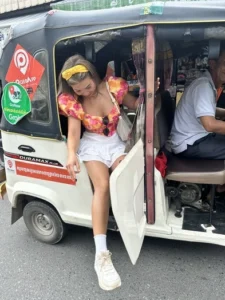
2. Da Nang, Vietnam 🇻🇳
Population: 1,286,000
- Why: Often overshadowed by Hanoi and Ho Chi Minh City, Da Nang is clean, livable, and has a major airport.
- Prices: $1,500–2,000/m² — much cheaper than HCMC. Prices have started rising again since 2024, with government backing and infrastructure support.
- Growth Drivers: Infrastructure boom, direct international flights, strong tourism rebound.
- Risks: Scams, bureaucracy, and foreigners can’t technically own land — only 50-year renewable leaseholds — but legal workarounds exist.

👉 My Take
Vietnam’s rental yields tend to be low, but appreciation potential is real — especially if you’re willing to be patient. In my case, I decided not to invest in Vietnam for now, because in 2025, I need more cash flow to fuel other projects.
Still, Da Nang is one of those cities I’d jump into if I had more flexible capital. I see potential in buying a large plot of land — not in the city center, but further out where it’s greener, quieter, and still very affordable. Picture this: rice fields, vegetable gardens, a co-working space, a boutique gym, maybe even a mini-market by the gate. A project that blends nature, wellness, and remote work — ideal for digital nomads, long-stay tourists, or even local families seeking an escape from city chaos.
✅ Best for: Visionary investors who value lifestyle-driven development, nature integration, and long-term land appreciation.
You can check out my Vietnam investment deep dive here:
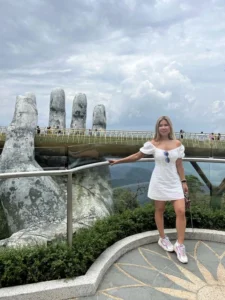
3. Bursa, Turkey 🇹🇷
Population: 2,142,600
- Why: Major industrial city with proximity to Istanbul — perfect for overflow capital.
- Prices: Around $700–1,000/m² depending on location.
- Growth Drivers: Turkish citizenship by investment, strong domestic rental demand, tourism crossover.
- Risks: Political uncertainty, currency volatility, high inflation.
👉 My Take
Turkey is one of my favorite countries in the world. I’ve almost invested there three separate times, but life had other plans. In 2023, I was all set to move to Antalya for three months, test the waters, and search for property… but then I met my fiancé. So, Turkey is still on the “to-do” list — and it’s personal.
✅ Best for: Investors seeking a low-cost entry into a high-character market, especially if citizenship perks are appealing.
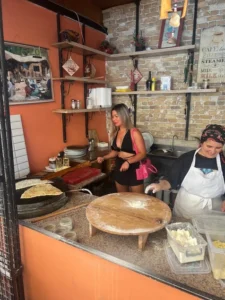
4. Yerevan, Armenia 🇦🇲
Population: 1.1 million
- Why: Quietly becoming a geopolitical capital magnet — with incoming capital from Russia, Iran, and Western investors.
- Prices: $1,200–1,600/m² (up from <$1,000 pre-2020).
- Growth Drivers: Tech and startup ecosystem, favorable double taxation treaties, easy residency setup, and a very open market for foreign investors.
👉 My Take
I was genuinely impressed by how well locals speak English — especially compared to neighboring Georgia. When I did my research in Yerevan last year, I noticed a clear uptick in property prices. Much of this demand was fueled by the Armenian diaspora, who accounted for over 30% of total real estate purchases in 2023. That same year, Armenians abroad sent over $3B in remittances into the country — significantly boosting both consumer spending and property demand.
I haven’t invested yet for two reasons:
- While tourism is increasing, it hasn’t yet reached the level that excites me — but that’s also why prices are still reasonable.
- Most apartments in Yerevan center are old and need heavy renovation. I could hire someone to manage the project, but I’d still need to be there regularly. And flights between Amsterdam and Yerevan aren’t straightforward — which adds time and cost.
But if you’re a digital nomad or you work remotely, it could be a fantastic base — especially while you’re getting your residency sorted and overseeing your renovation project. Armenia offers a beautiful, affordable lifestyle, stunning nature, great food, and a deep wine culture.
✅ Best for: Remote workers or hands-on investors who can live in the country while managing renovations and setting up residency.
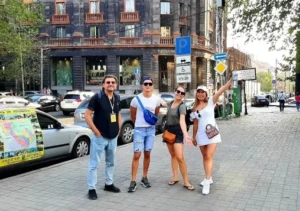
5. Querétaro, Mexico 🇲🇽
Population: 1,459,290
- Why: One of Mexico’s rising stars — safe, stable, and at the heart of the nearshoring boom.
- Prices: ~$800–1,200/m² for new developments.
- Growth Drivers: U.S. companies are relocating supply chains here. Growing expat and upper-middle-class demand.
- Currency Play: Strong USD vs. MXN offers great buying power.
‼️ Powerful Factors to Consider:
Strong FDI Growth: Querétaro attracted $6.3B+ in foreign investments (Jan–May 2024), 16% of Mexico’s national total.
Key Sectors: Aerospace, automotive, and manufacturing industries are booming.
Big U.S. Players:
Amazon Web Services investing $5B to build a digital city (7,000 jobs/year).
DHL opened a $120M logistics hub, its largest in Latin America.
General Motors among major U.S. companies operating locally.
540+ U.S. companies currently active in Querétaro.
Wage Growth: Average daily wages nearly doubled from 2014 to 2024.
👉 My Take
Mexico — along with three other countries in Latin America — has been on my radar for a while now: Argentina, Colombia, and Brazil. Still, I haven’t pulled the trigger yet — for two or more of the following reasons:
- Emotional connection: This is the biggest one. As stunning as Latin America is, I haven’t felt that personal click with any of the places I visited — not the way I have with Europe, Asia, or even parts of Africa.
- Distance: My main bases are in Europe and Asia. Mexico or any of the above-mentioned is a long haul, making it more difficult and expensive to be hands-on.
- Language barrier: English is rare, and while I could hire help, I prefer investing in places where I understand at least part of the conversation.
- Safety: While I never had any major issues, the safety concerns in certain parts are real and can’t be ignored.
That said, I’m keeping a close eye. I’ve seen some killer rental yields in parts of Mexico, Brazil, and Colombia — 10% or even higher — and that’s hard to ignore.
✅ Best for: Globally-minded investors looking for long-term value in economically rising, mid-tier cities.
6. Fortaleza, Brazil 🇧🇷
Population: 4,284,000
- Why: Beachfront paradise with strong domestic tourism. Often overlooked for Rio or São Paulo — but much more affordable.
- Prices: $800–1,200/m² for beachfront apartments.
- Growth Drivers: Remote worker migration, lifestyle upgrades, better safety than some major Brazilian metros.
- Currency Play: BRL weakness creates opportunities for dollar/euro-based investors.
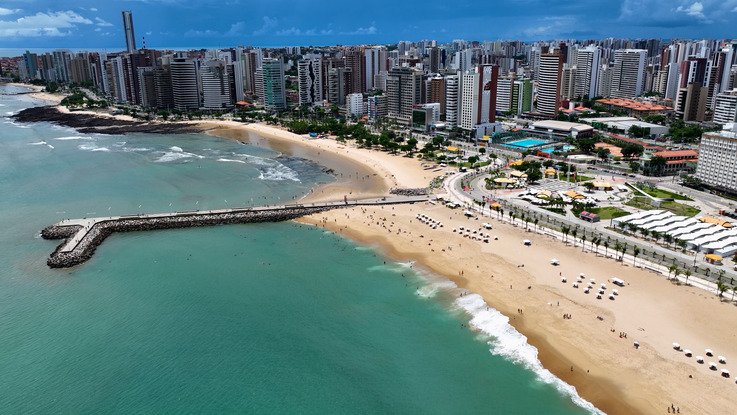
👉 My Take
I haven’t pulled the plug here for the same reasons as with Mexico — language barriers, safety perception, emotional connection, and geographic distance still play a role. But the fundamentals are strong, and I’m keeping a close eye on it.
✅ Best for: Investors with higher risk tolerance and appetite for beachfront lifestyle assets in emerging markets.
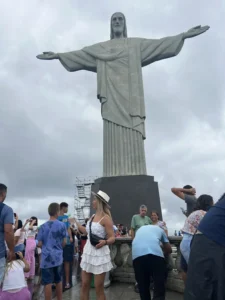
📍Bonus: Georgia 🇬🇪
I would also recommend keeping Georgia on your radar. Since the war between Ukraine and Russia — and especially since 2021 when I bought my properties — prices in Tbilisi have increased exponentially.
I haven’t done a deep dive lately, but the fundamentals remain interesting: Georgia has become a growing hub for digital nomads, international students (especially in medical universities), and improved air connectivity.
So perhaps this is your first test — do your homework, run the numbers, and see if Georgia is still a smart move.
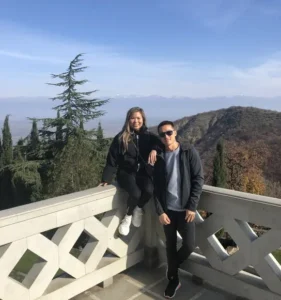
📊 Estimated Entry Costs (Minimum Investment for a Decent Asset)
This table gives you a rough idea of what it takes to enter each market. But numbers on a screen can only go so far.

If you’re serious about investing, go see it for yourself. Walk the neighborhoods. Talk to local brokers. Feel the pace of the city. Picture yourself — or your ideal tenant — living there.
Every investor sees things differently. What feels like a no-brainer to one person might be a hard pass for another. And that’s exactly why outcomes vary — even in the same city, at the same time.
I’ve used this example in my other blog, but I want to include it again here to emphasize that even when investors focus on the same city, their choices, evaluations, and visions can vary dramatically — and so do the outcomes.
Five years ago, six of us were looking to invest in Georgia. We were all aiming at the same country — yet our strategies couldn’t have been more different:
- One investor bought land just outside Tbilisi.
- Another picked up a condo in Batumi.
- Three of us bought apartments in different districts of Tbilisi.
- And one decided not to invest at all.
Out of the four who bought apartments, two ended up disappointed. The other two (myself included) were satisfied. But the biggest winner? The one who bought land — his investment has been 10x-ed since.
👉 Bottom line: Even in the same city, wildly different outcomes. The edge comes from knowing your goals, spotting potential others don’t, and choosing the right play for you.
My Most Recent Trip to Nairobi (Feb 2025): Experiencing the City’s Vibe and Potential with My Own Eyes 👀
How About You?
Have you invested in any of these cities — or seriously considered it? Maybe you visited and realized it wasn’t the right fit after all?
I’d love to hear your experience — especially if you caught something I missed or saw the opportunity through a different lens. Every investor has their own instincts and edge. The more we share, the sharper we get — and I’m always learning — trying to make smarter, more informed moves each time around.
Happy Investing! 💸
Related posts:
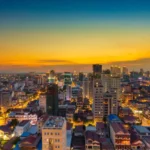 How to Invest in Cambodian Real Estate as a Foreigner: My Personal Experience as a European Investor
How to Invest in Cambodian Real Estate as a Foreigner: My Personal Experience as a European Investor
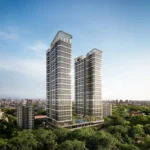 Nairobi Real Estate Investment 2025: How I Bought 2 High-ROI Apartments for Under $150K
Nairobi Real Estate Investment 2025: How I Bought 2 High-ROI Apartments for Under $150K
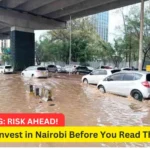 Nairobi Real Estate Investment Risks (2025): What Every Investor Must Know
Nairobi Real Estate Investment Risks (2025): What Every Investor Must Know
 How to Invest in Real Estate with Just $20K (2025) – Best Strategies & Smart Locations
How to Invest in Real Estate with Just $20K (2025) – Best Strategies & Smart Locations
 Vietnam Real Estate Investment 2025: Critical Risks, New Regulations & Insider Tips for Foreign Investors
Vietnam Real Estate Investment 2025: Critical Risks, New Regulations & Insider Tips for Foreign Investors
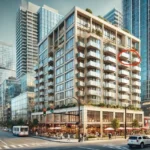 We Almost Bought TWO Off-Plan Apartments in Dubai—Here’s Why We Walked Away
We Almost Bought TWO Off-Plan Apartments in Dubai—Here’s Why We Walked Away





